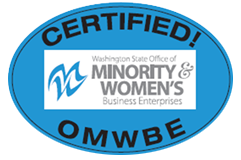Congratulations, we have made it to the final installment of the Common Accounting Terms that you need to know!
We hope these terms have been helpful for you and increased your accounting vocabulary.
Definitions Continued…..
Liability
Occurs when an individual or business owes money to another person or organization. Bank loans and credit card debts are common examples of liabilities.
- Current – liabilities due within one year of a financial statement’s date.
- Long-Term – have due dates of more than one year.
Liquidity
Describes the relative ease with which an asset can be sold for cash. In accounting and financial analysis, a company’s liquidity is a measure of how easily it can meet its short-term financial obligations. Accounts receivable, securities, and money market instruments are all common examples of liquid assets.
Materiality Principle
Describes the information that can influence a company’s decision-making process. The information, size, and nature of transactions are material if the omission or error of it might lead to decisions by its users. In accounting practices, a business discloses all material considerations in its financial reports. There is no rule available to determine the materiality of an amount. Most accountants consider an amount immaterial if it’s less than 2 or 3 % of net income.
Net Margin
Refers to describing net profit as a ratio of a company’s total revenues.
Net Profit
Net profit describes the amount of money left over after subtracting the cost of taxes and goods sold from the total value of all products or services sold during a given accounting period. If the net profit is a negative number, it is called net loss. The related term “net margin” refers to describing net profit as a ratio of a company’s total revenues. Net profit contrasts with gross profit. Gross profit simply describes the total value of sales in a given accounting period without adjusting for their costs.
On Credit
Accountants track partial payments on debts and liabilities using the term “on credit” (or “on account”). Both versions of the term describe products or services sold to customers without receiving upfront payment.
Overhead
Overhead costs describe expenses necessary to sustain business operations that do not directly contribute to a company’s products or services. For example rent, marketing, and advertising costs, insurance, and administrative costs.
Payroll
Payroll is the compensation a business must pay to its employees for a set period or on a given date. It also includes fringe benefits distributed to employees and income taxes withheld from their paychecks.
Present Value
Present Value is the current value of a future sum of money or stream of cash flows given a specified rate of return. Accountants sometimes make future projections with respect to revenues, expenses, and debts. The concept of “present value” (PV) describes calculated adjustments that express those future funds in present-day dollars.
Profit
Profit is a term that often describes the financial gain a business receives when revenue surpasses costs and expenses. You can calculate the profit of an organization by using the formula below:
- Total Revenue – Total Expenses = Profit
Wherein:
Total revenue is the total amount of money an organization generates as part of its operations and sales.
Total expenses is the total amount of money an organization spends to perform its operations.
Profit is the amount of money an organization has after it completes its payments for a period.
Profit and loss statement
Profit and loss (P&L) statement refers to a financial statement that summarizes the revenues, costs, and expenses incurred during a specified period, usually a quarter or fiscal year. These records provide information about a company’s ability or inability to generate profit by increasing revenue, reducing costs, or both.
Receipt
A receipt is an official written record of a purchase or financial transaction. Receipts serve as proof that the transaction took place and allow those transactions to be processed for tax purposes.
Return On Investment
Return on investment (ROI) measures the financial performance of an investment. You can calculate it by subtracting the initial value of the investment from the ultimate value of the investment (which equals the net return). Then, you can divide this new number (the net return) by the cost of the investment and, finally, multiply it by 100.
Revenue
Revenue is the money generated from normal business operations, calculated as the average sales price times the number of units sold. It is the top-line (or gross income) figure from which costs are subtracted to determine net income. Revenue is also known as sales on the income statement.
Single-entry bookkeeping
Single-entry bookkeeping is an accounting method that records financial transactions on one entry rather than the debit and credit entries used in double-entry bookkeeping. This is a cash-based bookkeeping method that tracks incoming and outgoing cash in a journal. This style of bookkeeping is useful for new businesses or those with few or uncomplicated transactions.
Taxable Income
Taxable income is the portion of your gross income used to calculate how much tax you owe in a given tax year. This includes wages, salaries, bonuses, and tips, as well as investment income and various types of unearned income.
Trial Balance
A trial balance is a report of the balances of all general ledger accounts at a point in time. Accountants prepare or generate trial balances at the conclusion of a reporting period to ensure all accounts and balances add up properly. In professional practice, trial balances function like test runs for an official balance sheet.
Variable Cost
A variable cost is a corporate expense that changes in proportion to how much a company produces or sells. Variable costs increase or decrease depending on a company’s production or sales volume—they rise as production increases and fall as production decreases.
This concludes our accounting vocabulary series. However, there are more accounting terms out there that you can learn as you go along.
Looking for the right accounting and finance firm? Consult one of our high-caliber recruiters at recruiting@seattlefinancial.com or call us at 206.343.8732.
Interested applicant? #FindYourPath with Seattle Financial. Click on the Job Seeker tab and you might find the right opportunity for you.




